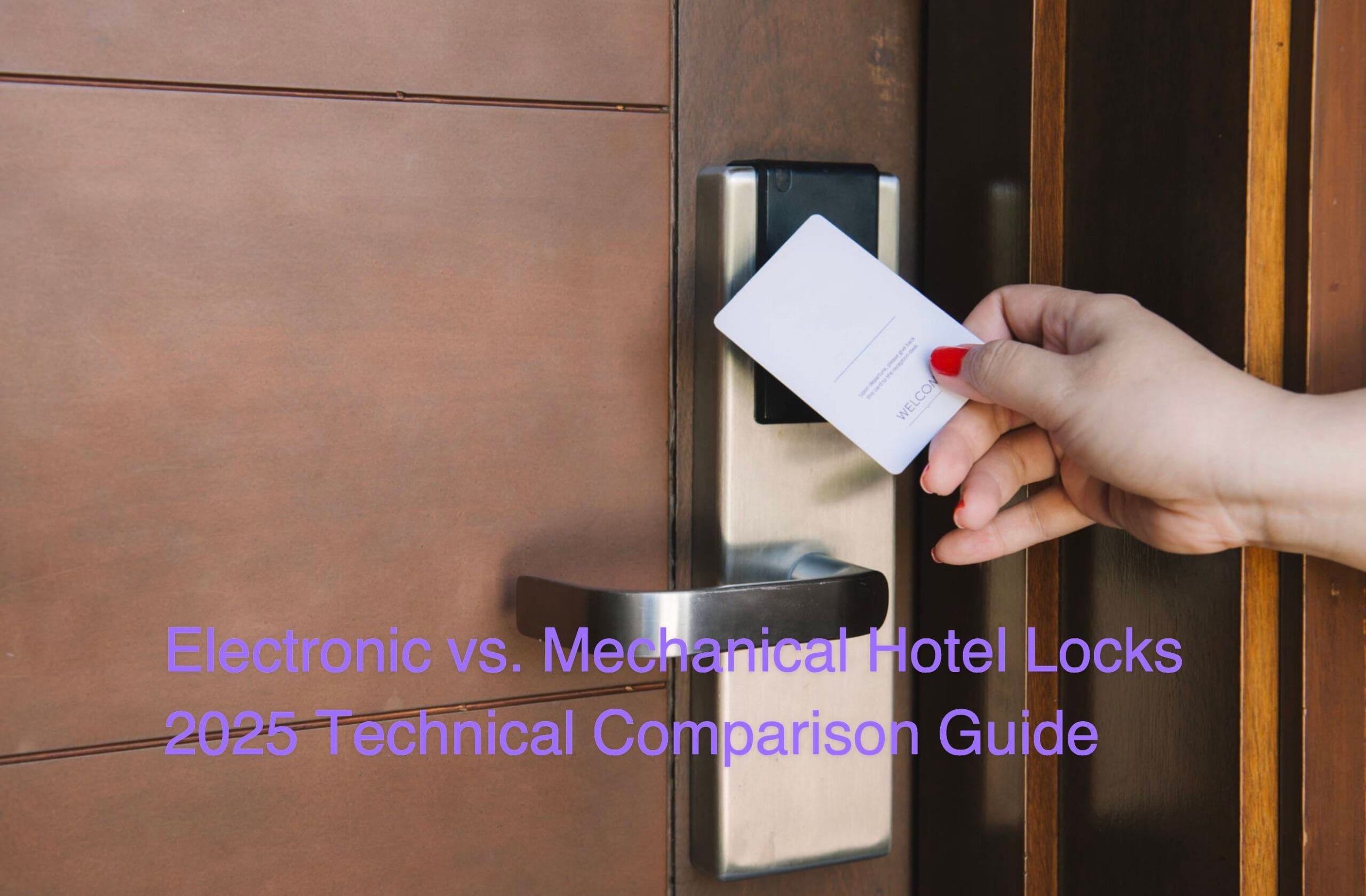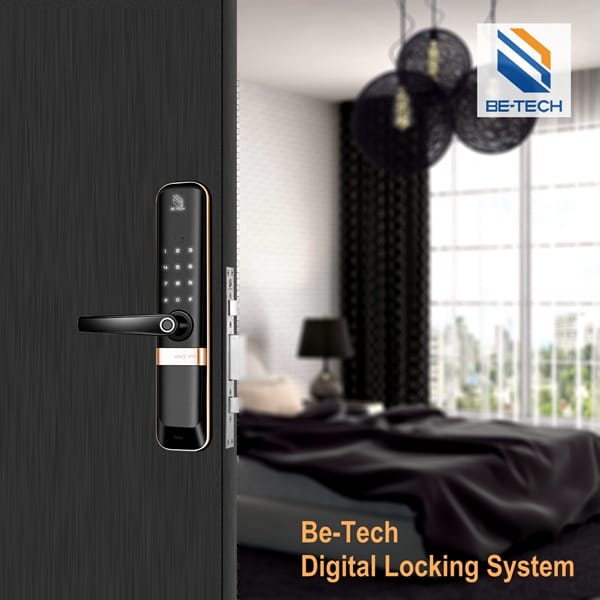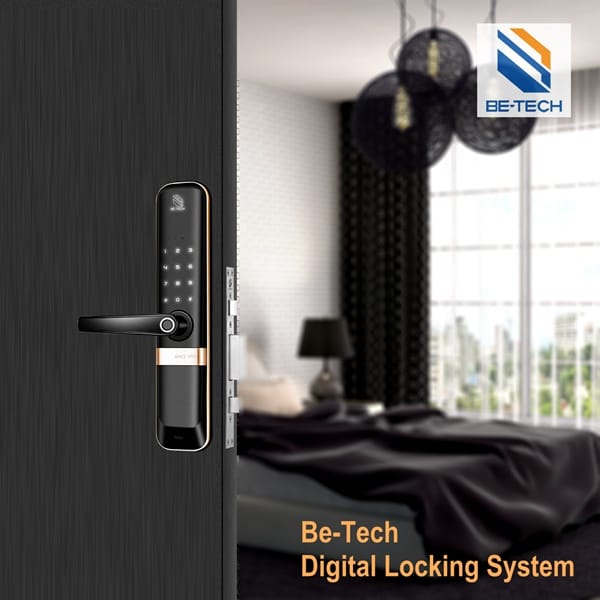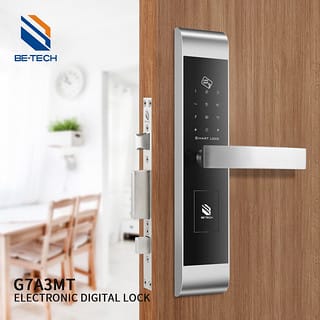In today’s business world, security is non-negotiable. As technology advances, the methods we use to protect our assets and employees must evolve as well. When it comes to business security systems, one of the most critical decisions you’ll face is choosing between traditional locks and smart locks. This comprehensive guide will provide a detailed cost-benefit analysis to help you determine the best solution for your organization’s unique needs in 2024.
The Evolution of Hotel Door Locks: From Traditional to Smart
Traditional mechanical locks have long been the standard for hotel room security. However, these systems present unique challenges in the dynamic hospitality environment. Be-Tech, a leading manufacturer of innovative hotel lock solutions, addresses these issues with cutting-edge technology.
Limitations of Traditional Hotel Locks
- Key Management Complexity: Hotels face significant costs and time investment in managing physical keys, including:
- Frequent rekeying due to lost or unreturned keys
- Staff time wasted on key distribution and tracking
- Security Vulnerabilities: Traditional locks offer limited protection against unauthorized access:
- Easy key duplication increases security risks
- Lack of access logs complicates incident investigations
Be-Tech’s Smart Solutions for Modern Hotels
Be-Tech’s electronic hotel locks revolutionize property security and guest experience:
- RFID Hotel Locks: Utilize contactless technology for seamless, hygienic access
- Mobile Access Solutions: Allow guests to use smartphones as room keys
- Audit Trail Capabilities: Provide detailed logs of all room entries for enhanced security
By upgrading to Be-Tech’s smart lock systems, hotels can significantly reduce operational costs, enhance security, and improve guest satisfaction. Our Shadow II RFID and Visual II RFID models offer state-of-the-art protection while streamlining hotel operations.
Embrace the future of hotel security with Be-Tech’s innovative lock solutions, designed to meet the evolving needs of the hospitality industry.
Exploring Smart Locks
Smart hotel locks are transforming the hospitality industry by offering advanced security, streamlined operations, and enhanced guest experiences. These innovative systems leverage digital technologies and wireless connectivity to provide hoteliers with powerful access control solutions.
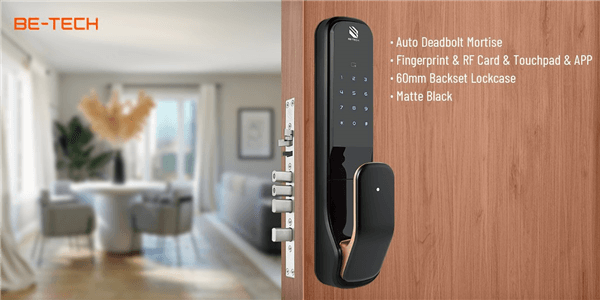
Key Features of Smart Hotel Locks
- Keyless Entry: RFID cards, mobile apps, and biometric access for convenient guest check-in
- Remote Management: Control access and monitor lock status from anywhere
- Integration Capabilities: Seamless connection with property management systems (PMS)
- Audit Trail Logging: Detailed records of all lock interactions for improved security
Addressing Hotel-Specific Security Concerns
While smart hotel locks offer numerous benefits, it’s crucial to address common security concerns:
- Hacking Vulnerabilities:
- Be-Tech’s hotel locks use advanced encryption protocols to prevent unauthorized access
- Regular firmware updates ensure ongoing protection against emerging threats
- Battery Life:
- Low-battery warnings sent directly to hotel staff
- Backup power options, including physical key overrides, ensure uninterrupted guest access
- High-Traffic Durability:
- Be-Tech’s locks are designed to withstand frequent use in busy hotel environments
- Robust materials like stainless steel ensure long-lasting performance
Integration with Hotel Management Systems
Seamless integration is key to maximizing the benefits of smart hotel locks:
- Property Management Software (PMS): Automate check-in/out processes and room assignments
- Energy Management Systems: Activate in-room utilities only when guests are present
- Housekeeping Systems: Improve efficiency by providing real-time room status updates
Benefits of Smart Locks for Hotels
- Enhanced guest security and privacy
- Streamlined check-in processes, reducing front desk wait times
- Improved operational efficiency through centralized access management
- Reduced costs associated with traditional key card systems
- Ability to offer contactless check-in options, meeting modern traveler preferences
By implementing Be-Tech’s smart hotel lock solutions, properties can significantly improve security, operational efficiency, and guest satisfaction. Our advanced systems, like the BASE RFID (9248 Series), are specifically designed to meet the unique needs of the hospitality industry, ensuring a secure and seamless experience for both guests and staff.
Cost Analysis: Smart Locks vs. Traditional Locks for Hotels
Initial Investment
- Traditional Locks: These locks generally have a lower upfront cost but may lead to higher long-term expenses due to frequent rekeying and security vulnerabilities.
- Smart Locks: While the initial investment is higher, smart locks offer significant savings over time by reducing key management costs and enhancing security.
Ongoing Costs
Traditional Locks:
- Rekeying Expenses: Frequent rekeying is necessary, especially in hotels with high staff turnover.
- Key Duplication: Constantly replacing lost keys adds recurring costs.
- Maintenance: Traditional locks require regular repairs due to wear and tear.
Smart Locks:
- Reduced Rekeying: Digital credentials eliminate the need for physical rekeying—simply revoke access remotely.
- No Key Duplication: Digital keys save costs and reduce waste.
- Lower Maintenance: Electronic components in smart locks are more durable and require less frequent servicing.
Potential Cost Savings
- Enhanced Security: Features like RFID technology and audit trails reduce the risk of theft or unauthorized access.
- Improved Efficiency: Streamlined access control minimizes time spent on key management, boosting staff productivity.
- Energy Savings: Smart locks integrated with building automation systems can adjust lighting and temperature based on room occupancy, reducing energy costs.
Why Choose Be-Tech Smart Locks?
Be-Tech’s advanced hotel lock solutions combine cutting-edge features like mobile key integration, robust encryption, and eco-friendly designs. With options tailored for both new constructions and retrofits, Be-Tech ensures seamless installation and superior guest experiences.
Benefits of Smart Locks vs. Traditional Locks for Hotels
Security Advantages
Smart Locks:
Smart locks provide superior security tailored to the needs of modern hotels:
- Multi-Factor Authentication: Utilize PIN codes, RFID cards, biometrics, or smartphone apps for layered protection against unauthorized access.
- Remote Monitoring: Hotel staff can monitor room access in real-time, receive tamper alerts, and remotely grant or revoke access as needed.
- Audit Trails: Detailed logs help track who accessed specific areas and when, enhancing accountability during security investigations.
Traditional Locks:
Traditional locks pose significant vulnerabilities:
- Key Duplication Risks: Physical keys are easy to duplicate, increasing the risk of unauthorized entry.
- Susceptibility to Picking/Bumping: Traditional mechanisms are prone to tampering techniques.
- Lack of Monitoring: No real-time tracking makes it difficult to respond quickly to security breaches.
Convenience Features
Smart Locks:
Smart locks improve both operational efficiency and guest satisfaction:
- Keyless Entry: Guests can use smartphones or RFID cards to access rooms, eliminating lost key issues.
- Remote Access Management: Staff can unlock doors remotely for late check-ins or deliveries without physical presence.
- Streamlined Check-In: Guests bypass front desks with digital keys sent directly to their devices.
Traditional Locks:
Traditional locks often lead to inefficiencies:
- Lost keys result in delays and costly rekeying.
- Limited access control makes it challenging to manage temporary permissions for guests or staff.
Legal & Compliance Considerations
Hotels adopting smart locks must ensure compliance with:
- Data Privacy Regulations (e.g., GDPR): Protect guest data through encryption and secure storage.
- ADA Standards: Provide accessible solutions for individuals with disabilities.
- Fire Safety Codes: Ensure locks meet local fire safety requirements for emergency egress.
By upgrading to smart locking systems like Be-Tech’s RFID-enabled solutions, hotels can enhance security, improve guest experiences, and streamline operations—all while staying compliant with industry standards.
Factors to Consider When Choosing Between Smart Locks and Traditional Locks
When selecting a locking system for your hotel, it’s crucial to evaluate several key factors that align with your security needs and guest experience.
Security Needs:
- Level of Security Required: Assess the sensitivity of your hotel’s information and assets. High-security environments may require advanced solutions like biometric locks or multi-factor authentication systems.
- Vulnerability Assessment: Conduct a thorough security assessment to identify potential vulnerabilities in your existing system. This will help determine the level of protection needed.
Budget Considerations:
- Initial Investment vs. Long-Term Costs: Weigh upfront costs against long-term savings from reduced key management and enhanced security features offered by electronic locking systems.
- Return on Investment (ROI): Calculate potential ROI from smart locks based on usage patterns. Utilizing an ROI calculator can provide valuable insights into cost-effectiveness.
Integration Capabilities:
- Compatibility with Existing Systems: Ensure that your chosen locking system integrates seamlessly with current access control and property management software to maximize operational efficiency.
- Future-Proofing: Select systems that can accommodate future technology needs and scalability, such as those featuring mobile access solutions that allow guests to unlock doors using their smartphones.
User Experience:
- Ease of Use for Employees and Guests: Opt for an intuitive system that simplifies access procedures for both staff and guests, enhancing overall satisfaction.
- Training and Support: Choose a provider that offers comprehensive training materials and ongoing support to facilitate smooth transitions to new systems.
Aesthetic Considerations:
- Matching Business Branding and Design: Select smart locks available in various styles to complement your hotel’s aesthetic, ensuring a cohesive look throughout your property.
By carefully considering these factors, hotel operators can enhance security while improving guest experiences with cutting-edge locking solutions from Be-Tech Lock. Our products feature advanced technologies such as RFID integration, mobile access capabilities, and robust encryption standards, making them ideal for modern hospitality environments.
Conclusion: Choosing the Right Lock for Your Business
Investing in the right lock system is a crucial decision for any business owner. While traditional locks may seem appealing due to their lower upfront cost, their long-term expenses and security vulnerabilities can outweigh this initial advantage. Smart locks offer a range of benefits that enhance security, improve convenience, and boost operational efficiency.
By carefully considering your business’s specific needs, budget, and security requirements, you can make an informed decision that will protect your assets, employees, and customers.
Ready to upgrade your business security?
- Request a Free Consultation: Speak with a security expert to discuss your business’s unique needs and get a personalized recommendation for the best lock system.
- Download Our Smart Lock Buyer’s Guide: Get a comprehensive guide to help you evaluate your options and make the right choice for your business.
- Get a Customized Quote: Receive a tailored quote for your business lock system, including installation and support services.



